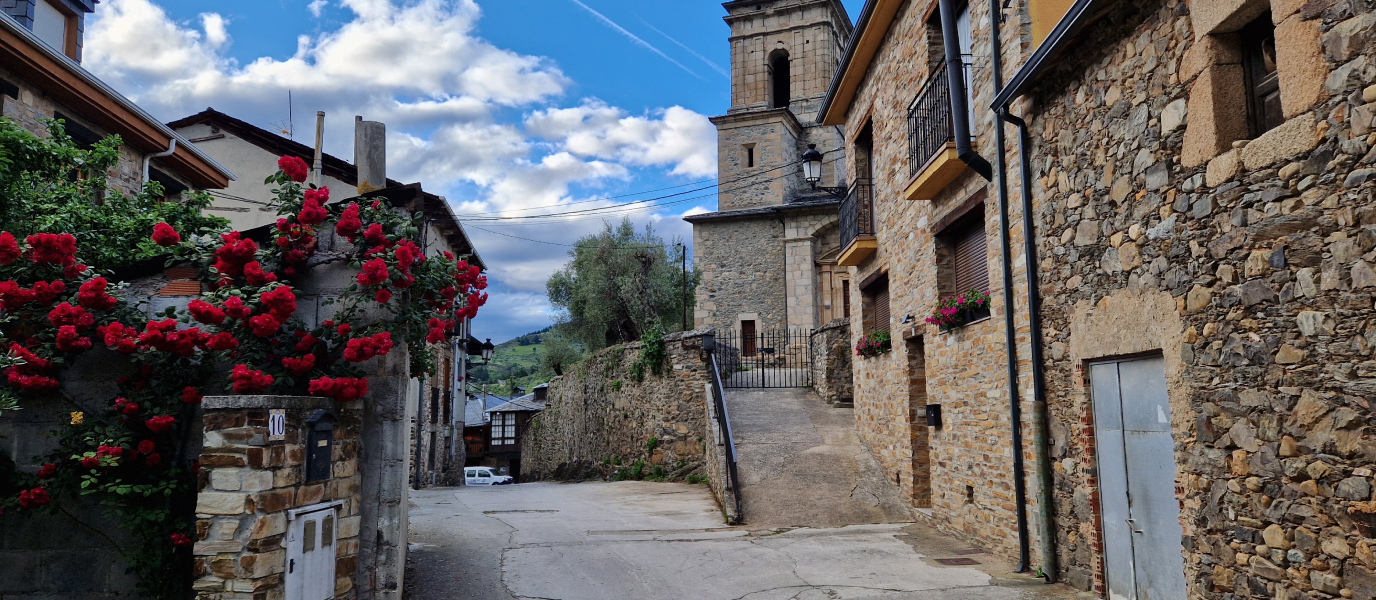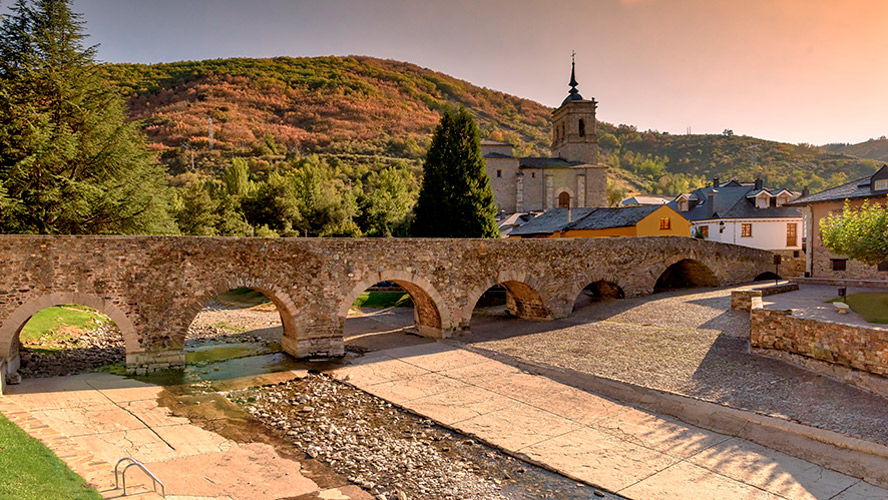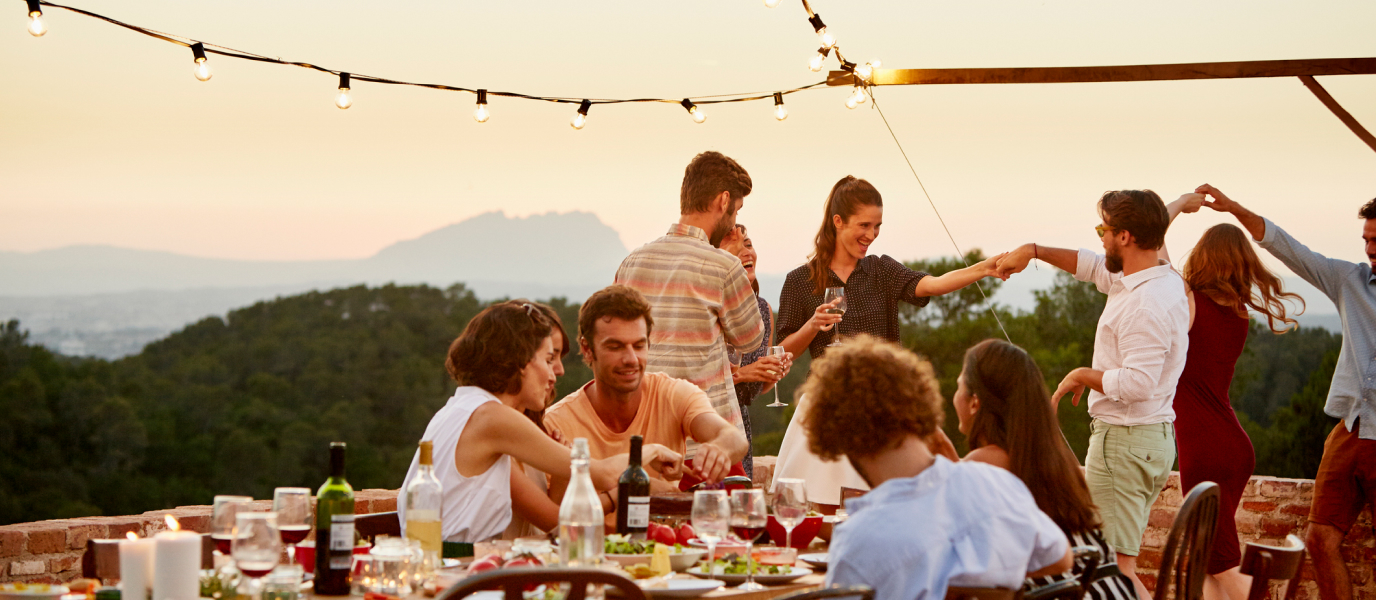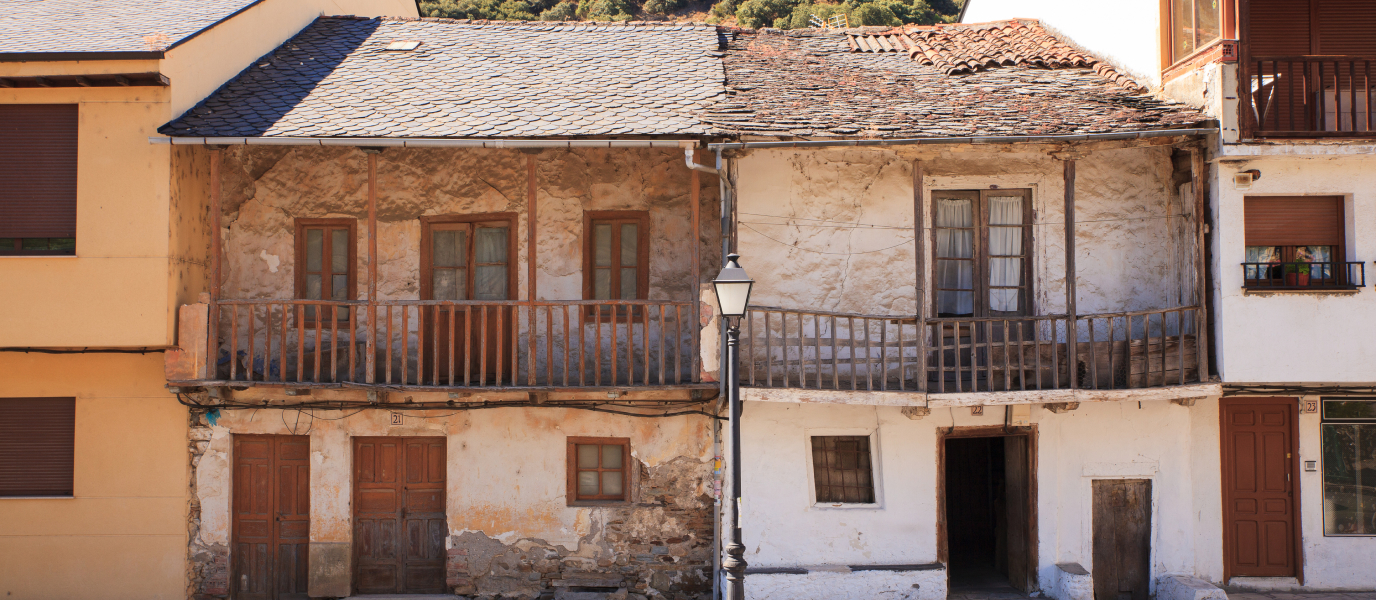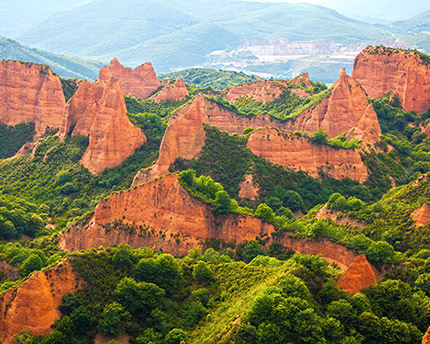Located in the middle of El Bierzo, Molinaseca is one of those villages that have managed to capture its historical essence in every stone, every balcony and every flower. For centuries, it has been one of the musts for pilgrims on their way to Santiago de Compostela. In fact, although there is evidence that there were several settlements in the area during Roman times, the emergence of Molinaseca as such is due to the development of the Jacobean Route, which has even shaped its structure: totally linear along the course of the river Meruelo.
In a perfect state of preservation, this village was declared a Historic-Artistic Site in 1975 and gradually became a focus for tourism itself, in addition to the pilgrims who continue to walk along its Royal Road.
If you visit Molinaseca in the summer, you can enjoy the water festival that is organised every August in honour of Our Lady of Sorrows and Saint Roch in which the course of the Meruelo river is diverted so that it crosses the main street to the Plaza del Rollo.
The festival of provincial tourist interest brings together thousands of people in the centre of the village with only one objective: that no one comes out dry.
History of Molinaseca
During Roman times, with the gold mines of Las Médulas active and other mining operations nearby, the area around Molinaseca was filled with settlements. Many of the roads, causeways and bridges were purposely created as gold trails, i.e. the routes used for this precious metal towards Astorga.
In those journeys, Molinaseca and specifically its Roman Bridge were of great importance since they were directly connected to one of the Roman roads.
The same roads were later used by the Suevi, the Vandals, the Visigoths and even the Muslims and it was not until the Middle Ages, with the rise of the Kingdom of León, when Molinaseca and the whole of the El Bierzo region gained importance in terms of both population and economic development, as shown, among other things, by the palatial buildings on its Royal Road.
That development in the 12th century also explains the origin of its name: Molinaseca translates as dry mill thanks to the people who provided their service to the monasteries.
At that time, the village belonged to the manor of Ramiro Froilaz, who pledged it to the Countess Doña Elvira on 15 May 1168. The manor, however, ended up being shared between the abbess of Carrizo, the abbot of Sandoval Monastery and the bishop of Astorga.
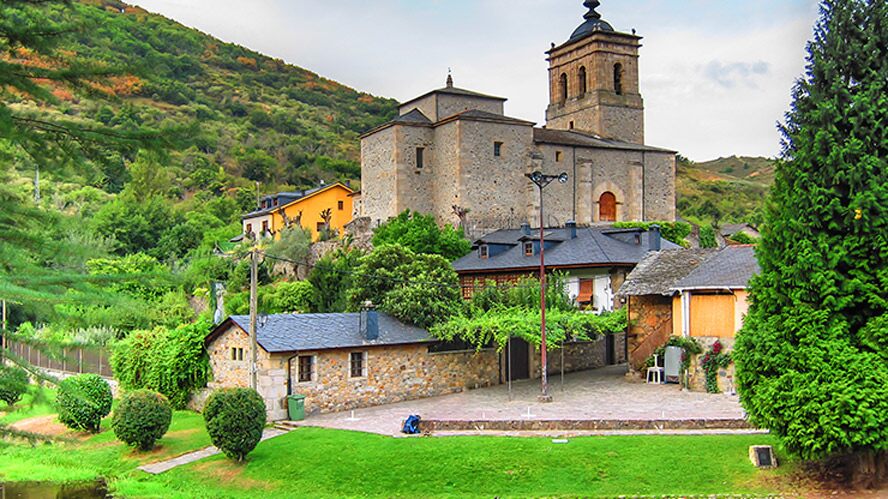
Molinaseca’s Royal Road
The Royal Road (Calle Real) is the main artery of the village and coincides exactly with the route of the Way of Saint James in Molinaseca. You can walk along this historic road from the Roman Bridge to the Holy Christ high cross.
The road marked by its stones is lined by a series of noble and ancestral homes, with slate roofs and ashlar façades. All of them keep the family coat of arms of those who proudly claim the medieval origin of the town on their doors.
The Royal Road also has overhanging chestnut wood galleries that allow people to pass through without having to worry about the harsh winter weather. Among the main houses are the Casona de Don Pelegrín, the Palace of the Balboa family, and the Palace of Cangas de Pambley.
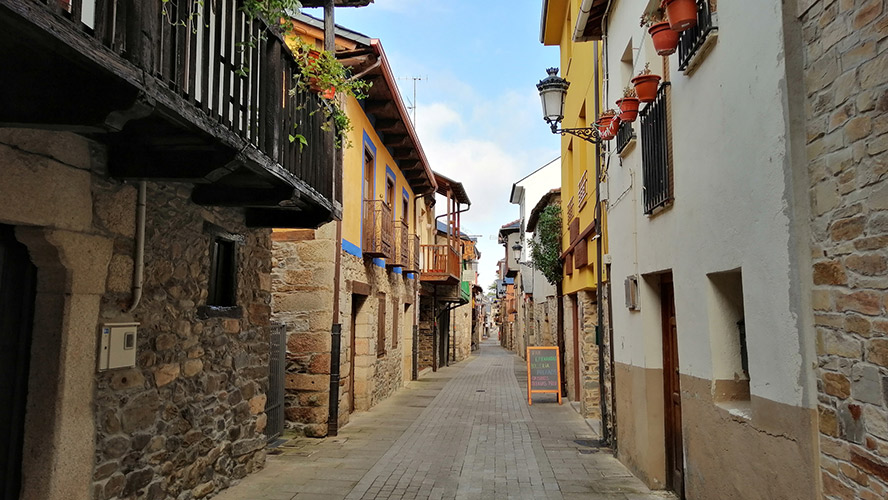
Casona de Don Pelegrín
Nowadays, this building has been converted into a guest house, owned by the Arias family, but it still keeps alive the legend that has made it historically famous: Queen Urraca of León used to spend the night there whenever she travelled to Galicia.
It is also located just after the Roman Bridge, so that you can enjoy the river pool formed by the Meruelo when entering Molinaseca.
Palace of Cangas de Pambley
In the middle of the Royal Road, a huge mansion stands out above all the other coats of arms, occupying an entire block. The imposing Palace of Cangas de Pambley is flanked by two towers that speak of its magnificence, and the noble coats of arms of the Cangas-Pambley family stand proudly above the doorway. The building is listed as a Cultural Heritage Site.
Saint Nicholas of Bari Church
The spirituality of the Way of Saint James can be felt not only in the palaces but also in the churches in and around Molinaseca. The most majestic one, on a hill overlooking the whole village, is Saint Nicholas of Bari Church
The temple is a magnificent example of 17th century religious art, culminating in a Baroque façade by the master stonemason Juan de Collado. The saint after whom it is named, Saint Nicholas of Bari, appears in a niche in the tower, accompanied by the symbol of one of his miracles.
Inside, the blind dome and the baroque altarpieces stand out, perfectly integrated into the church’s architecture.
If the opportunity arises, you should be near the church at twelve o’clock in the morning to hear the chimes of the Lourdes Ave Maria.
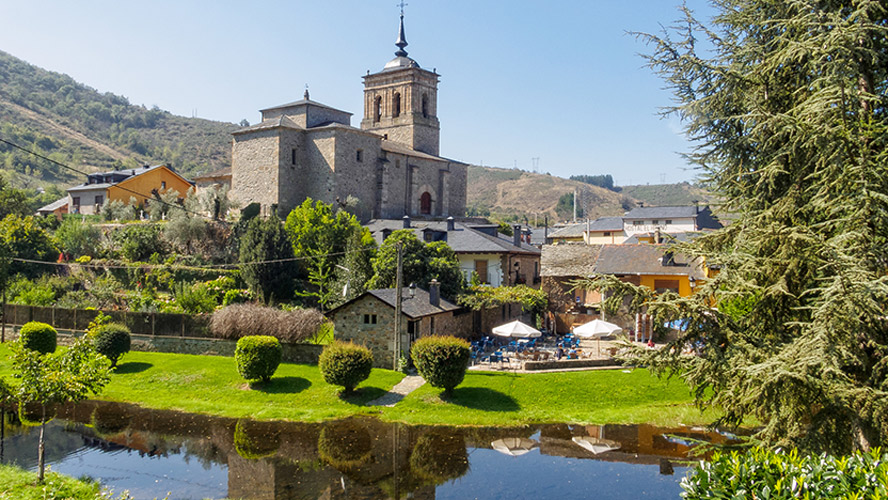
Our Lady of Sorrows Sanctuary
The chronicles speak as early as the 11th century of a small chapel where the Our Lady of Sorrows Sanctuary now stands and of the deep devotion to the Virgin shown by pilgrims as they passed through.
The current building is a reconstruction of the one that was erected in the 17th and 18th centuries by the village priest, Antonio de Castro y Yebra, and his nephew, Juan Antonio de la Vega y Castro. Both are buried in the temple.
The interior features a large dome with a lantern that reads ‘Quam Speciosa Et Pulchra’ (How precious and beautiful) while, on the arch, above the pendentives, another inscription speaks directly of heavenly Israel: ‘Vadim Ad Montem Israel’ (I will go to Mount Israel).
Pilgrims’ Bridge
The Roman Bridge or Pilgrims’ Bridge, since it is where the pilgrims enter Molinaseca on their way to Santiago de Compostela, is a masonry structure with seven vaults, the first three of which are half-buried.
It is believed to have been in operation as early as Roman times to remove mined gold from the settlement. Its use is recorded in medieval documents from the 12th and 13th centuries.
Where to eat in Molinaseca
Eating in Molinaseca, as in the rest of the region, is one of the main tourist attractions. Wine, cecina beef and botillo sausage are three basic ingredients in any dish from the El Bierzo region.
In the restaurants along the Royal Road you can find the pilgrim’s menu, with homemade, inexpensive and unpretentious food. Nevertheless, Molinaseca also has some good restaurants where you can enjoy a gastronomic feast such as El Bordón, Casa Palacio, De Floriana and Casa Ramón.
Things to see nearby
Molinaseca is located in a river valley, so there are many routes around it that can be done on foot such as the one that runs along the Malpaso Bridges, on the way to Riego de Ambrós, which shows the infrastructure from Roman times that was used to communicate the Via Augusta road with the mining operations.
Another option is to explore the landscape of Las Médulas, the largest open-pit gold mine during the Roman Empire, declared a Cultural Heritage Site in 1996; or visit Ponferrada, the capital of El Bierzo and one of the most beautiful towns in the province.
Where to stay in the province of León
In Molinaseca there are several accommodation options such as guest houses and hostels but, if you want to continue enjoying the province’s medieval history, you can return to León to sleep in its historic centre.
In this case, the Barceló León Conde Luna located in the heart of the city of León is a good choice as it is also a gastronomic reference since it has two of the most iconic restaurants in the city: Nimú Azotea and Casa Mando.
Another option is the Occidental León Alfonso V, also in the centre, with a surprising architecture as it has an impressive interior dome that rises from the reception to the eighth floor.




































































